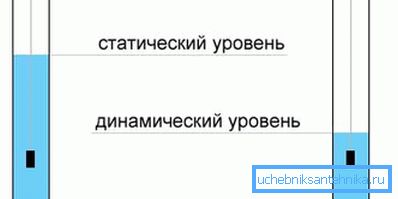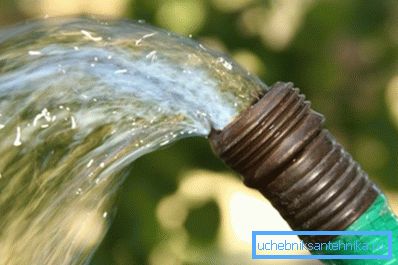Well flow rate and how to measure it
The debit is the main characteristic of the well, which determines the maximum amount of water (oil, gas) that can be pumped out per unit of time: minute, hour, day. For this indicator, choose a pump with the desired performance: the higher the value, the more powerful the equipment should be.
Calculate the performance will help formula the flow rate of Dupuis, Tim, Altovsky, Smreker or Keller, depending on the conditions of application: the number of depressions and options for water - pressure or non-pressure.

What are the measurements of flow rate
- First, the flow rate, as the main indicator of the performance of the well, fits into her passport;
- Secondly, with the knowledge of the exact value, it is possible to restore the flow rate of wells for some reason to be unexploited;
- Thirdly, there is the practice of drilling wells before the construction of a residential house, so knowledge of the flow rate is extremely important for the possibility of further providing water to the housing. Moreover, it is not the potential volume of liquid that can be extracted, but that which will be necessary for normal life activity;
- Fourth, the pump capacity must necessarily correspond to each specific well.
Note! Exploiting marginal wells with powerful equipment is impractical, moreover, such a pump can completely deplete the aquifer. And the operation of low-yield gas wells, for example, is unprofitable or unprofitable.
Is it possible to calculate the flow rate by yourself
You will hardly be able to determine the exact debit rate with your own hands - you need special equipment, specific knowledge and skills. Even if you have all this, you will receive not an exact value calculated only for this particular moment, but the saturation of the aquifers also depends on climatic conditions and on the time of year. Those. The following measurements carried out with a time difference will be strikingly different from the first one.
Water levels and methods for their measurement

Experts to calculate performance operate on two indicators:
- Statistical water level;
- Dynamic water level.
Both values are measured from the ground level to the surface (mirror) of water in the well, using a rope with a weight suspended from it.
After completion of drilling, the water in the resulting well is allowed to stand for several days, then the level of water collected in the production pipe is measured. This indicator is the statistical level.
The dynamic level is measured after several pumpings of fluid of varying intensity. After water intake, the water mirror in the production pipe decreases and if the pump power does not exceed the maximum allowable volume, after a while it stabilizes at a certain point. (See also the article Replacing the pump in the well with your own hands.)
That is, the dynamic level is the constant height of the standing water column in the production pipe, which is maintained at a continuous water intake, not exceeding the flow rate.
If the difference between the two values, statistical and dynamic, is small (about 1 meter), then the pump power corresponds to the flow rate. Dividing the pumped-up fluid for the time spent on this, you can get the most primitive calculation of the performance of the well.

Specific rate
As already mentioned, the well productivity depends on many external factors: the power of the aquifer; structure, permeability and composition of rocks, the design of the downhole part. The exact productivity of the water source helps to calculate the formula for the specific flow rate of the well, for which several repeated water intakes are carried out.
The more precisely the instruction for measuring the flow rate is observed, the easier it will be to correct water supply problems in the future.
Possible problems during well operation
Guaranteed long-term and uninterrupted supply of fluid in your home - proper operation. Periodic (once a month, quarter or six months) approximate calculation of flow rate - a small price for the optimal water pressure.
At the same time, no super-complex formula for the flow rate of a well is useful: it is enough to track the stopwatch with the time of full filling of some conventional measuring capacity.
The increase in time indicates the presence of any problems:
First of all, a decrease in flow rate may be associated with clogged wells, in this case, preventive work with the shells should help.
There is also a sharp drop in the volume of pumped fluid while maintaining the water level in the pipe, which means that the well filter may be clogged. It is cleaned by reciprocating movements of the rubber ring of the piston.
If in the process of drilling, workers labored and did not fall into the aquifer, or it was not rich initially, alas, the likelihood of finding a new water source is great.

Several approximate values of the flow rate of various types of wells
- The performance of an artesian well varies from 50 to 160 liters per minute; (See also the article How to clean wells.)
- The well in the sand will give less - up to 15 liters per minute, with time the flow rate will fall, as silting is possible;
- The flow rate of the Abyssinian well, properly equipped, will also be from 10 to 20 liters per minute, but over time its performance will increase slightly. This is due to the fact that with an active and frequent water intake underground in the filter area a small lake is formed.
Summary

We told you about what the flow rate is and why you need to know this indicator. The video in this article will help you to visualize all the stages of measuring the performance of the water source, so that in the future you will not have problems with the water supply of a country house or a backyard.